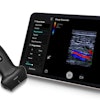Scheduling appointments for pediatric renal sonograms at urban institutions is more difficult than scheduling at rural institutions, according to research published October 10 in the Journal of Surgical Research.
A team led by Taylor Washington from Seattle Children's Hospital found that while the likelihood of scheduling within seven days was similar in both areas, patients were nearly three times as likely to be able to schedule a renal-bladder ultrasound within that time at a rural institution.
“These findings suggest that challenges in healthcare delivery may be different postpandemic in rural and urban areas, and that the impact of staffing challenges on nonclinical aspects of care is an area for further exploration,” Washington and co-authors wrote.
Previous studies suggest that the COVID-19 pandemic exacerbated healthcare disparities, including access to screening and treatment among different patient populations. Additional burdens have been placed on healthcare systems as they contend with staffing shortages.
Renal-bladder ultrasound assesses subclinical changes that may require medical or surgical intervention. It is also a surveillance imaging tool in pediatric urology.
Washington and colleagues sought to describe comparative access to care for pediatric renal-bladder sonography in rural and urban areas in Washington State. The researchers posed as parents trying to schedule an appointment for ultrasound exams at radiology departments and compared intervals between the day of contact and the first available appointment between rural and urban institutions. In total, they attempted to contact 48 rural hospitals and 39 urban hospitals.
The researchers, while posing as parents, were able to contact 42 (87.5%) of the rural hospitals and 20 (51.3%) of the urban hospitals. They also reported that scheduling could not be completed in five rural and seven urban hospitals.
For the remaining hospitals, the team found that the median wait time was similar for both hospital settings. This included six days in urban hospitals and seven days for rural hospitals (p = 0.81). The group also found that the likelihood of scheduling between the two hospital types was similar (odds ratio [OR] = 0.23; p = 0.18).
However, the researchers also found that patients were significantly more likely to have a completed call at a rural hospital (OR = 6.65, p = 0.0005). They also reported that patients were 2.89 times more likely to be able to schedule a renal-bladder ultrasound within seven days at a rural compared with an urban institution (p = 0.019).
The study authors suggested that based on their results, the impact of staffing challenges on nonclinical aspects of care is an area to further explore. They wrote that the skewed distribution of available ultrasound exams in both rural and urban hospitals suggests that other factors differentially affect access.
“Successfully scheduling a radiology test by phone requires a scheduler who is able to answer a call from a potential patient and an available appointment for the desired examination,” they added. “Insufficient staffing, inability of schedulers to answer phones promptly, and scheduling challenges, then, would be targeted areas to maximize successful scheduling.”
The full study can be found here.



















